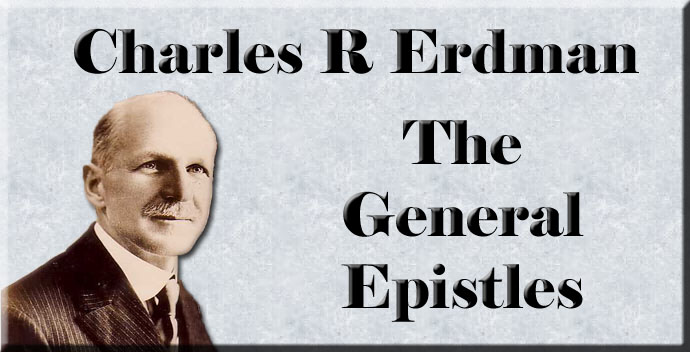
The General Epistles
By Charles R Erdman
The First Epistle of John
|
Are you certain that you are a Christian? Are you conscious of fellowship with the Father and with his Son? Are you confident that by faith in Christ you have been "born again" and that you are a true "child of God?" To answer such questions this epistle was composed. The writer states his purpose quite clearly: "These things have I written unto you, that ye may know that ye have eternal life, even unto you that believe on the name of the Son of God." The phrase "eternal life" does not mean merely endless existence; it denotes not only the length, but also the kind, of life; it suggests a relation, not to time, but to God; it describes the life revealed in Christ and shared by those who put their trust in him. The assurance that one has this "life" is not mystical or mysterious. The knowledge is based upon grounds which are simple and plain. They are chiefly three: faith and righteousness and love. They correspond to three great affirmations in reference to God made by the writer: "God is light," "He is righteous," "God is love." If such is the nature of the Father, then his children will be like him; they will believe in his Son who is "the light of the world"; they will be righteous "even as he is righteous"; they will "love the children of God"; and they will "love God and do his commandments." Thus belief and righteousness and love are declared to be tests of "eternal life." They can be absent from the experience of no real Christian. The epistle, however, is much more than a mere series of tests. So conscious are we of the imperfection of our faith and holiness and love, that such tests might be applied in such a way as to tease and torment the truest follower of Christ. The writer aims to comfort and to encourage. He wishes to assure the humblest believers that "eternal life" is their present possession, and to urge them to manifest more and more fully its characteristics and its qualities. These "tests of life" are not intended to gratify morbid introspection, nor to encourage our self-righteousness, nor to enable us to criticize and condemn others. The purpose of the letter is to give to believers a happy confidence in their blessed state, to enable them to appreciate their marvelous privileges, and to encourage them to a faithful performance of their duties, to a fuller development of life, and to a more perfect fellowship with God. The writer has another purpose, closely related and equally practical: he desires to warn his readers against certain prevalent errors of belief and practice. There were those who once had been professed Christians, who "went out" from the Church, who denied that our Lord is truly God and truly man, at once human and divine. To this false teaching they apparently added the perilous doctrine that one who was living in sin might still be "spiritual" and a "child of God." So dangerous were such teachers, so truly hostile to Christianity, that the writer calls them "antichrists" and declares that they have no fellowship with the Father or the Son. They are not "of God"; they are "of the world." This little word "of" is quite significant. Like "in," it is one of the most important words of the epistle. "Of" denotes origin, nature, source, likeness, birth, thus; one who is "of God" is born of God, is like God, is a child of God. "In" signifies "union with," permanent indwelling, "fellowship"; thus, as believers in Christ, we are urged to "abide in him," and are assured that "we are in him that is true." These little words, used in connection with such leading terms as "God" and "the world," "light and darkness," "love" and "hate," aid in forming the striking contrasts which characterize the epistle, and, as already intimated, they summarize in large measure the content of the epistle which concerns the life of those who are described either as "in him," and so having fellowship with God, or as "of God" and so "children of God." The style of the epistle is pure, clear, and artlessly simple. Its profound truths are set forth in brief phrases, and are emphasized by repetitions which in form are rhythmic and poetic. Its unity is apparent, yet the structure is such as to evade exact analysis. The main truths and something of their relation may be indicated by the appended analysis. It is suggested in part by a modern writer whose interpretations mold in large measure the exposition which follows:
|
|
 |
 |
|
|
|
-
Site Navigation
 Home
Home What's New
What's New Bible
Bible Photos
Photos Hiking
Hiking E-Books
E-Books Genealogy
Genealogy Profile
Free Plug-ins You May Need
Profile
Free Plug-ins You May Need
 Get Java
Get Java.png) Get Flash
Get Flash Get 7-Zip
Get 7-Zip Get Acrobat Reader
Get Acrobat Reader Get TheWORD
Get TheWORD